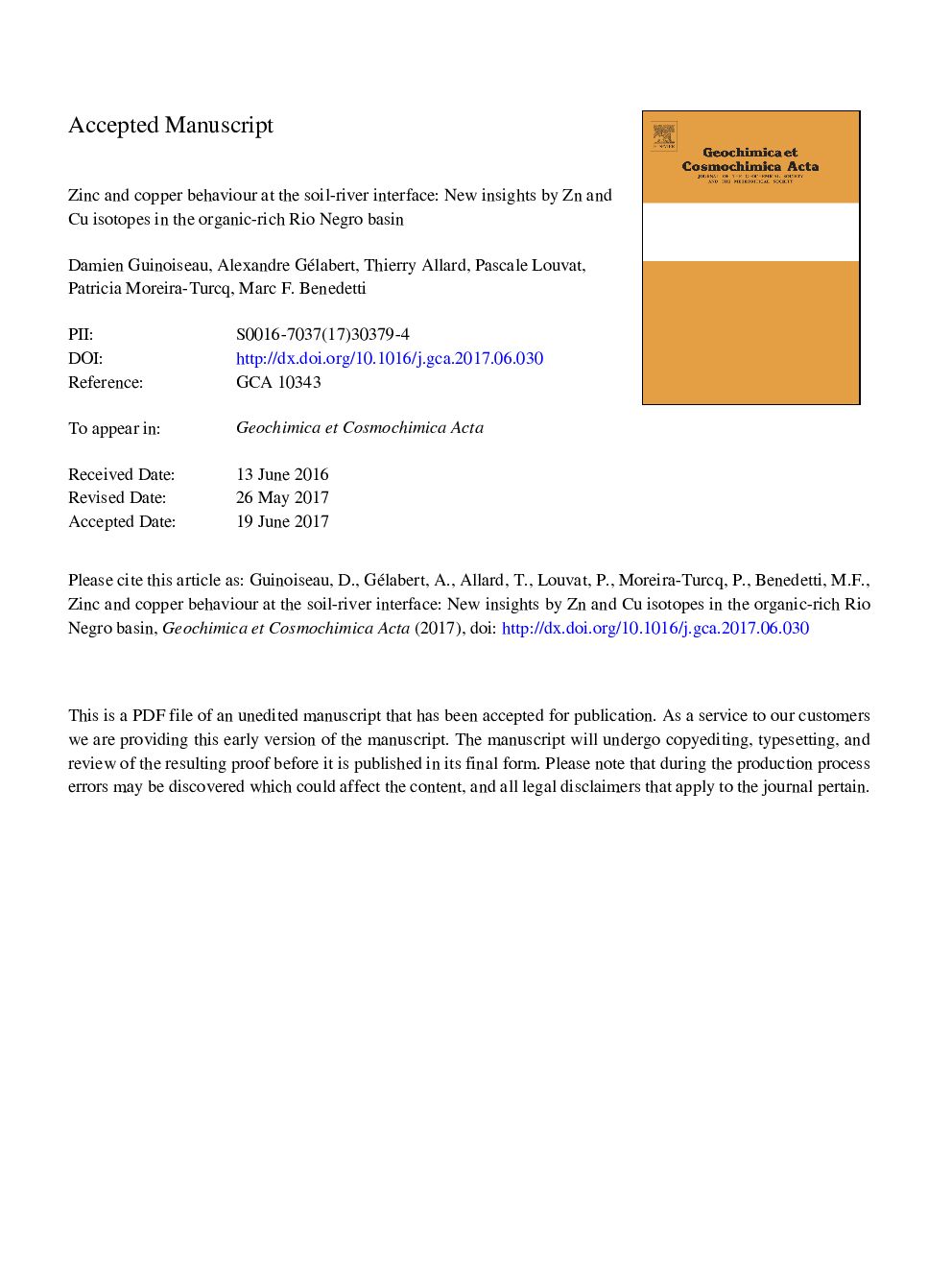| Article ID | Journal | Published Year | Pages | File Type |
|---|---|---|---|---|
| 5783327 | Geochimica et Cosmochimica Acta | 2017 | 45 Pages |
Abstract
The stronger reactivity of Cu than Zn with organic ligands induces its complete complexation. Copper is controlled by refractory particulate organic matter (POM) and by reactive colloidal organic matter; the latter being enriched in 65Cu due to stronger binding interactions than in POM. While the Cu content remains constant in the upstream part of the Rio Negro, downstream, the decrease of SPM and colloidal Cu fluxes is associated with a constant δ65CuSPM and with an increase of δ65Cucoll at the Rio Negro outlet. Geochemical mass balance modelling, based on SPM, Cu and Zn fluxes in SPM and their associated isotopic signatures, confirms distinct host phases for Zn and Cu, and identifies the most probable places where losses of these two metals occur. In colloids, the observed Cu isotope fractionation (from 0.24 to 0.45â°) superimposed on the significant Cucoll loss is assumed to result from a new isotopic equilibrium in a low velocity and high productivity zone: Cu-rich colloids enriched in 63Cu aggregate and settle down, whereas the remaining heavy Cu is partially complexed on strong organic ligands secreted by phytoplankton, forming new Cu-colloids.
Keywords
Related Topics
Physical Sciences and Engineering
Earth and Planetary Sciences
Geochemistry and Petrology
Authors
Damien Guinoiseau, Alexandre Gélabert, Thierry Allard, Pascale Louvat, Patricia Moreira-Turcq, Marc F. Benedetti,
